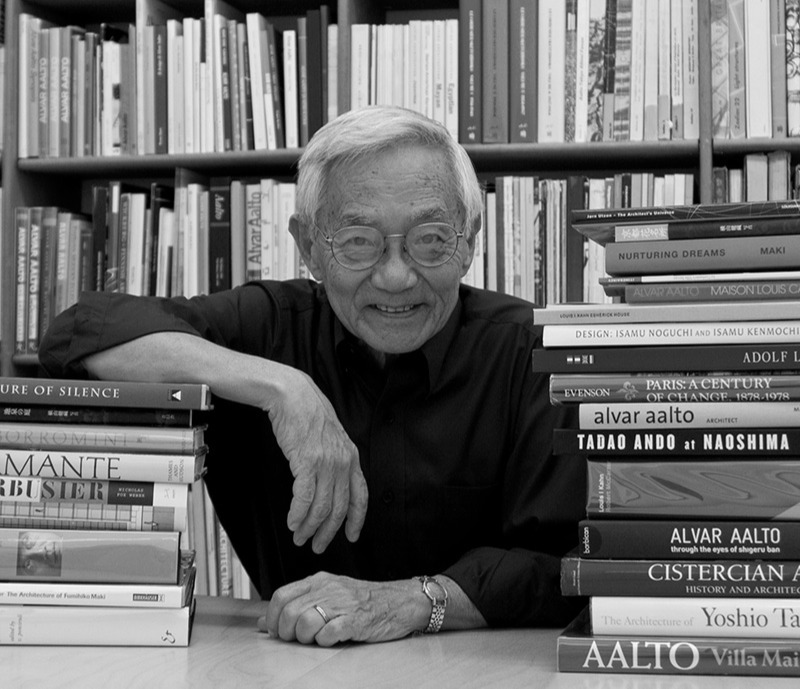John Masayuki Hara was born in Honolulu on December 23, 1939 to Ernest Hideo Hara, FAIA, and Claire Nishikawa Hara. In 2002, his father was the fourth winner of the Medal of Honor. Although obviously exposed to the profession of architecture, John Hara was focused on the arts in general from an early age. One of the reasons he chose to attend the University of Pennsylvania architecture school after graduating from Punahou School was because it allowed him to pursue his love of playing the oboe. He played chamber music during his time at the University and partly supported himself through paid stints playing at churches and other events. His love affair with music continued after he graduated with his Bachelor of Architecture degree in 1962, through years of working abroad and in the United States.
At the University of Pennsylvania, Hara counted among his mentors and teachers such modernist luminaries as Louis Kahn, Robert Venturi, who was John’s thesis instructor, and Romaldo Giurgola, each of them at the early stages of being recognized for his own genius. Hara tells of meeting Sue Kahn, Louis Kahn’s daughter, who was the first flutist of the orchestra, early at Penn. He visited her house, and recalls naively commenting on the wonderful architectural drawings on the walls, and asking who did them.
After graduating with a Bachelor of Architecture degree Hara was offered a job in Grasse, France with Leon Loschetter, who was one of his professors. After the summer, when his former professor returned to Penn to teach, Hara stayed in Europe, working for Steiger + Steiger in Zurich and Candilis, Josic, and Woods in Paris before returning to Hawai’i in 1964. He came home to teach at the University of Hawai’i, which he did until 1971 (he also taught there from 1980-1991). He opened his own firm, John Hara Associates Inc. in 1970. During this same period he was also a member of the Honolulu Symphony Orchestra, where he played the oboe professionally for five years.
In 1966 he met Marie Wakayama Murphy, after being introduced through classmates of Marie’s at Punahou School. Marie, a writer, was an assistant professor of literature and writing in the Department of English at the University of Hawai’i, where she taught for three decades. Her resume includes being one of the founders of the Talk Story Conference and later influential in Bamboo Ridge Press, a journal of literature and arts whose goal is to publish works by and about Hawai’i’s people. JOhn adn Marie married in 1968. They spent their honeymoon at the Mana Kea Beach Hotel, where John was responsible for a major renovation after the 2006 earthquake.
While teaching at UH, John also worked for John Tatom, and later for Charles (Ty) Sutton, FAIA, who was the second winner of the Medal of Honor. After opening his own office, John quickly became known for modernist design and the refinement of his work. His projects are highly personal and, partly to maintain his influence of the projects, he has intentionally limited his office to a staff of twelve or fewer.
Three of Hara’s earliest houses on Waialae Iki, with their lack of eave overhangs and planar walls appear somewhat stark by comparison with the work that followed. Yet these houses still contain many of the hallmarks common to all of Hara’s work: the penetration of light into the interior spaces, the importance of natural ventilation, and the attention to the relationship of the building to outdoor spaces. Hara has said that the successful design of houses, and by extension all architecture, requires the architect be “highly responsible and trustful with the client, recognizing how personal the environment is which must be created.” This approach and the quality of the work he produced led to many other commissions for houses.
Hara was elevated into the AIA Fellowship program and received the FAIA professional designation in 1996, recognizing his design excellence on a national level, as well as the significant contribution he had made to architecture, the community and the wider society.
In 2006, recognizing his lifetime contributions to the state, Hara was the first architect to receive the Governor’s Award for Distinguished Achievement in Culture, Arts and Humanities from the Hawaii State Foundation on Culture and the Arts.
His work has been recognized with over 55 design awards from organizations around the world.
Throughout his career, John Hara has been a consistent advocate of the arts, a producer of modern architecture that fits well into the landscape of Hawai’i, and a mentor to those who collaborated with him. His legacy in Hawai’i can be celebrated as a visionary architect who continues a dialogue of ideas based on his early exposure to great architects with a unique ability to turn those ideas into esteemed works of architecture.
SIGNIFICANT PROJECTS:
1977 Honolulu Musem of Art’s Clare Booth Luce Wing
1978 John A. Burns Hall, East-West Center
1994 Wo International Center and Physical Education Facilities
1994 Maui Arts & Cultural Center
1997 Mamiya Science Learning Center
2001 Honolulu Museum of Art’s Luce Pavilion
2003 Mid-Pacific Institute’s Hartley Math, Science, and Technology Complex
2004 Punahou School’s Case Middle School – first local project to receive Gold LEED Certification by USGBC
2008 Kamehameha Schools’ Kunuiakea Athletic Complex
2012 University of Hawaii – West Oahu Campus
2012 Maui Arts & Cultural Center Yokouchi Pavilion
